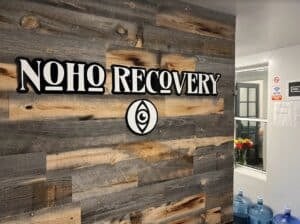Lean Treatment And Rehab
Treatment For Lean Addiction
Lean is known by several names, “sizzurp,” “Purple Drank,” “purp,” and is even featured in a Soulja Boy song fittingly titled “Sippin lean,” but what is it? lean is the combination of soda or candy with prescription cough medicines that contain either Promethazine (an antihistamine) or Codeine (an Opioid). The drink concoction is commonly referenced in hip-hop songs and throughout social media, but lean abuse is not without potential dangers. In fact, Codeine attaches to the brain receptors in the same way that Heroin does. If an individual misuses Codeine repeatedly, they can build a tolerance to it which means more of the substance is needed to produce the same “high” or effect.
Because lean is often used in social environments, it may be difficult to notice when one is abusing the substance. However, the ramifications of lean abuse can lead to serious health concerns and overdose, so seeking treatment is crucial. Receiving treatment for lean abuse follows a similar format to receiving treatment for any other substance abuse. An individual, if needed, will first enter a process of detoxification, followed by inpatient treatment, outpatient treatment, and then ongoing treatment, i.e., support groups or counselors.
Online Addiction Counseling
Get professional help from an online addiction and mental health counselor from BetterHelp.
- Access to Therapy 24/7
- Easy Online Scheduling
- 20,000+ Licensed Therapists
Paid Advertising. We may receive advertising fees if you follow links to the BetterHelp site.
Detoxification Process Before Lean Abuse Treatment
As previously mentioned, detoxification is often the first step of the recovery process for all substance abuse treatment. The detoxification process purges the body of any residual substances in order to begin treatment in a neutral state of mind and body, without the effects of a particular substance. It is never advised to stop using a substance altogether, also known as “quitting cold turkey,” without medical supervision or consultation, as withdrawal symptoms can be potentially life-threatening. In the case of lean abuse, the withdrawal symptoms from Codeine and Promethazine can vary from mild to intense and include symptoms like:
- Nausea
- Fever
- Insomnia
- Body aches
- Diarrhea
- Stomach pains
To offset these uncomfortable symptoms, medical professionals at the treatment facility will often administer medications like Methadone and Buprenorphine. Methadone, a long-acting Opioid agonist, prevents cravings, reduces withdrawal symptoms, and dulls the effects of Opioids. Buprenorphine, a partial Opioid agonist, works similarly to Methadone to minimize withdrawal symptoms and block the euphoric effects of Opioids like Codeine. These medications have shown effectiveness in reducing Opioid use and harmful Opioid-related behaviors when used as part of a comprehensive treatment program. Many avoid stopping substance use, like lean consumption, for fear of the severe side effects, but medication-assisted detox allows for a detox process that is safe and relatively predictable.
Looking for a place to start?
Join the thousands of people that have called a treatment provider for rehab information.
Free and confidential
Available 24/7
Access to professional treatment
Inpatient Treatment For Lean Abuse
After the detoxification process, individuals have the option to enter an inpatient or outpatient treatment facility or other forms of treatment. Inpatient programs offer around-the-clock care and support in a highly monitored environment. This intensive structure is designed to give individuals the space to devote their time to recovery from lean abuse entirely. For individuals struggling with lean abuse, inpatient rehab may be beneficial as it will remove the individual from the environment that may trigger substance abuse.
The length of treatment at an inpatient program will depend on several factors, including the severity of the substance abuse, if there are co-occurring mental health conditions, and if polydrug abuse is occurring. Polydrug abuse refers to the abuse of multiple substances and can significantly impact how long an individual will need to detox before treatment. On average, however, the standard stay at a residential treatment center is 30 days, with most centers offering more extended programs of 60 to 90 days. For assistance with finding an inpatient treatment center, contact a treatment provider here.
Check if my insurance covers rehab
Addiction Center is not affiliated with any insurance.
Outpatient Rehab For Lean Addiction
Treatment at an outpatient facility is best suited for those with a mild case of lean or substance abuse or for those that require a flexible program to maintain their life schedule. Outpatient programs are designed to allow individuals a level of autonomy as they can live at home or in a sober living facility. Still, they are required to attend treatment multiple times a week to receive drug and alcohol counseling, therapy, and medication.
Maintaining Recovery Through Support Groups
There is a transitory period after outpatient treatment where individuals often begin attending continuing care groups. Continuing care groups, like Alcoholics Anonymous or Narcotics Anonymous, offer continuous support after an individual has completed their respective treatment programs. Support groups allow individuals to share their similar experiences in a space often facilitated by a licensed professional. These groups, and the individuals within them, can offer guidance and emotional support to those struggling with substance abuse. For those struggling with lean abuse, there are support groups that focus on living a life without Opioid use. Even after treatment for lean or Codeine abuse, continued support significantly improves the likelihood of sustained recovery.
Why Is Rehab Necessary For Lean Abuse?
As previously mentioned, lean abuse can be challenging to spot as it is often casually referenced through social media and pop culture without mentioning its potentially fatal consequences. Misusing Promethazine-Codeine cough medicine, which includes using lean, can cause an individual’s heart rate and breathing to slow to a dangerous degree. The slowing of the heart rate and breathing places an individual at risk of an overdose, as deadly overdoses occur when the heart and lungs are stopped from working completely. Additional effects of consuming lean can include:
- Dizziness
- Nausea
- Impaired Vision
- Memory Loss
- Hallucinations
- Seizures
Although it goes by many seemingly harmless names, the physical harm that lean can cause to those who misuse it is concerning. Treatment is necessary for lean abuse in order for individuals to regain control of their lives and learn coping skills that will strengthen their resistance to cravings and triggers.
Taking The Next Steps Toward Recovery From Lean Addiction
The decision to begin treatment can be challenging, but it is a necessary step in pursuing recovery from lean abuse. The impacts of lean abuse, especially concerning Codeine addiction, can have damaging, long-term effects, so it is essential to find a treatment approach that will address all of an individual’s needs. Every individual will have specific needs, so contact a treatment provider today to discuss rehab-related questions.
Published:
Author
Carmen McCrackin

-
Carmen McCrackin earned a B.A. in Journalism from the University of Auburn and has over 3 years of professional writing experience. Her passion for writing and educating others led her to a career in journalism with a focus on mental health and social justice topics. Her main mission is to be a platform for all voices and stories, and to provide tangible resources to those seeking recovery for themselves or loved ones.
- More from Carmen McCrackin
Reviewed by Certified Addiction Professional:
David Hampton

A survivor of addiction himself, David Hampton is a Certified Professional Recovery Coach (CPRC) and a member of the National Association of Alcohol and Drug Abuse Counselors (NAADAC).
- More from David Hampton
Sources


Recovery Starts Today
Call Now For Addiction Support



Newport Academy – Teen Rehab Center
Port Townsend , WA


Sequoia Detox Centers
Spokane Valley , WA


Moonlight Mountain Recovery – Nampa
Nampa , ID

Bayside Marin Treatment Center
San Rafael , CA

Newport Institute for Young Adults
Sunol , CA

The Camp Recovery Center
Scotts Valley , CA

Moonlight Mountain Recovery
Pocatello , ID


Tarzana Recovery Center – TRC
Tarzana , CA



Hollywood Hills Recovery
Los Angelos , CA